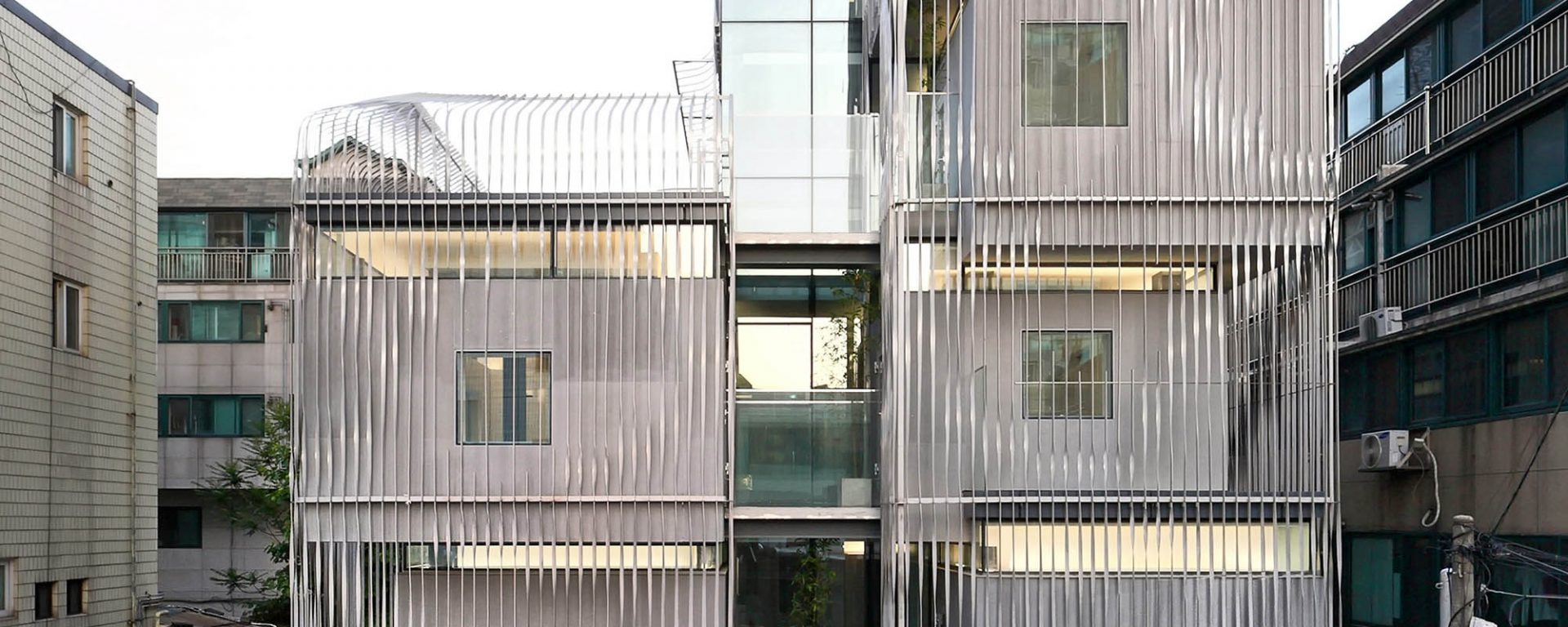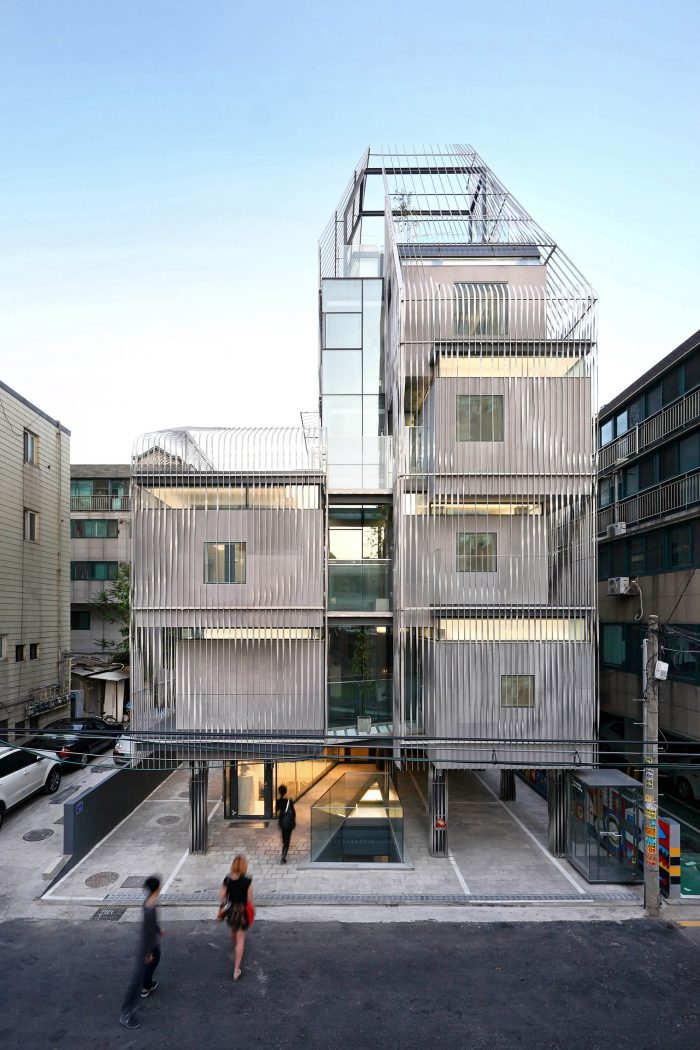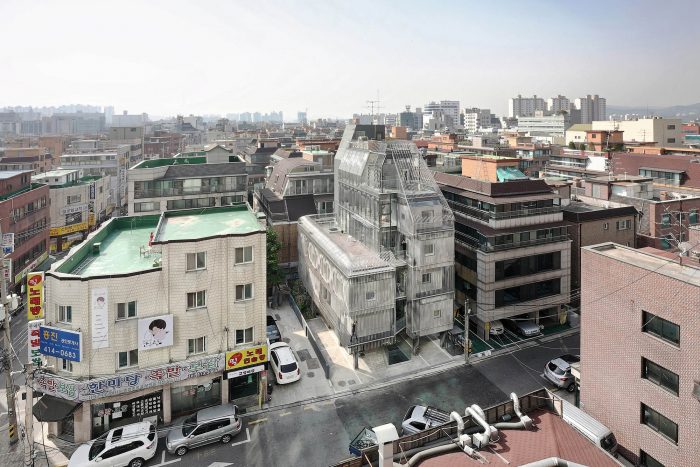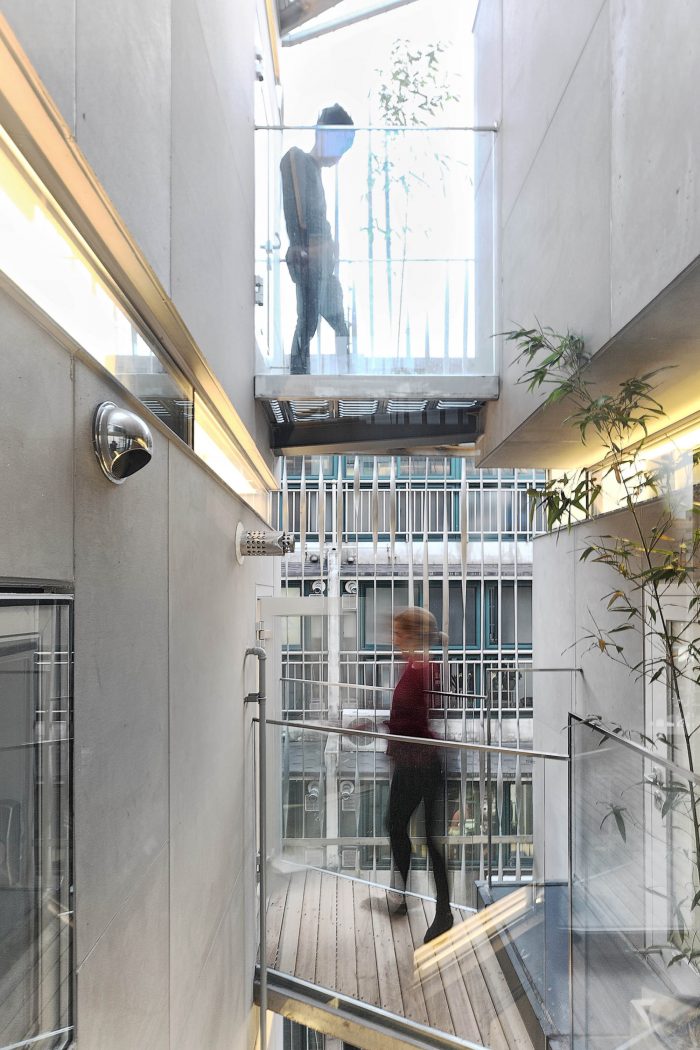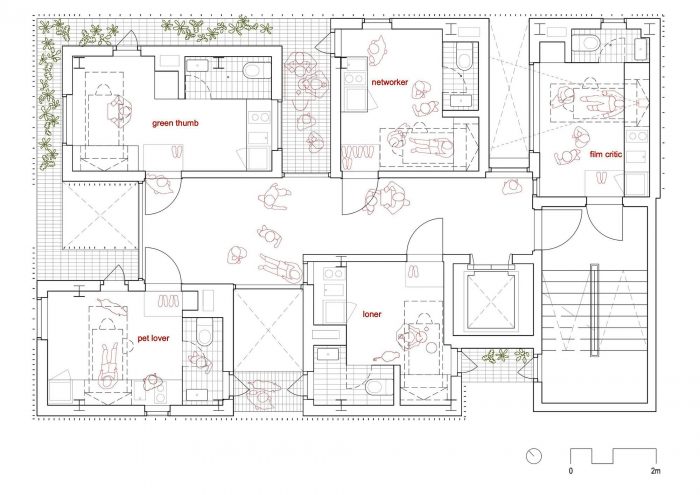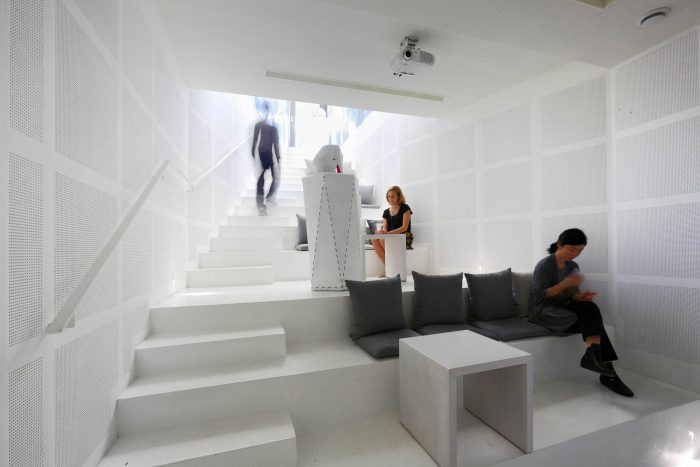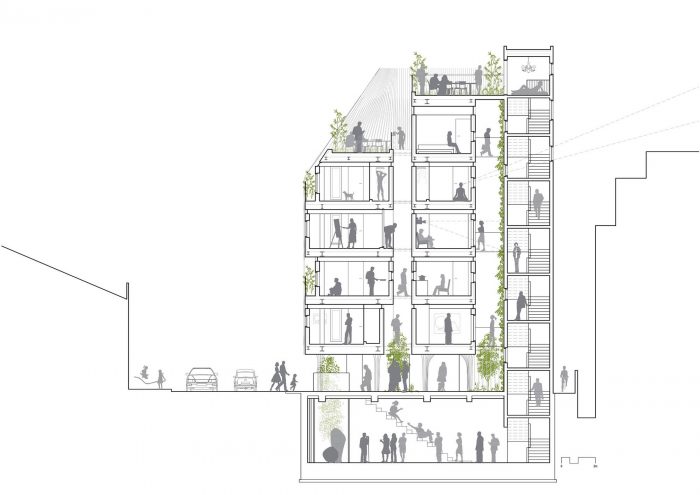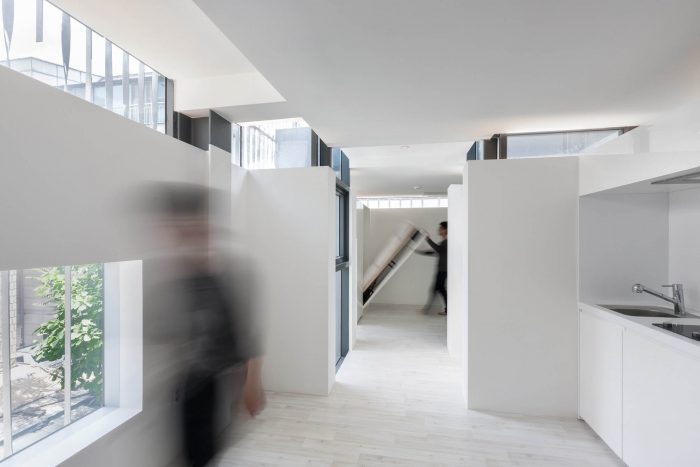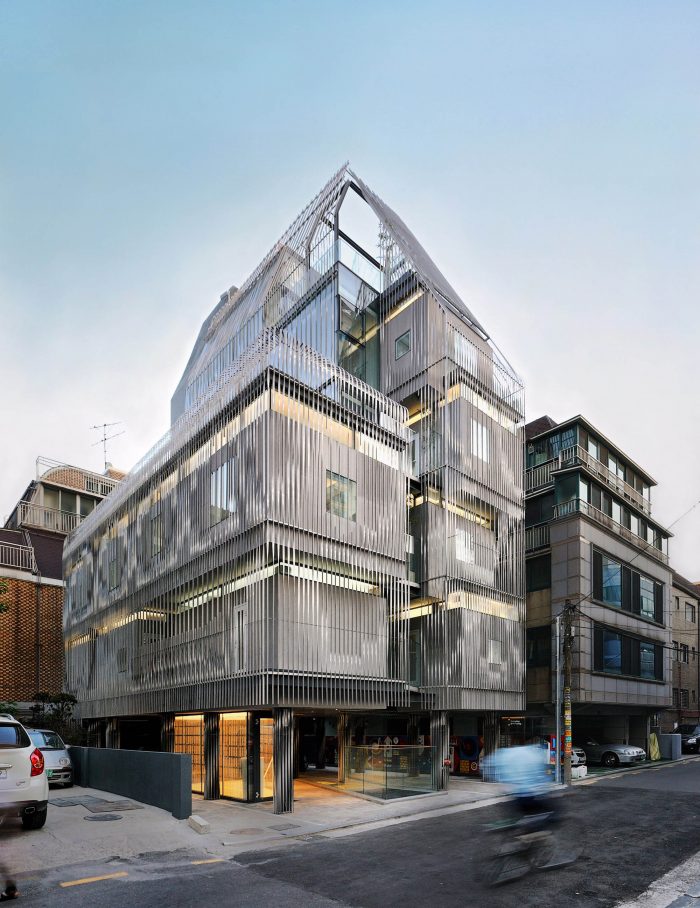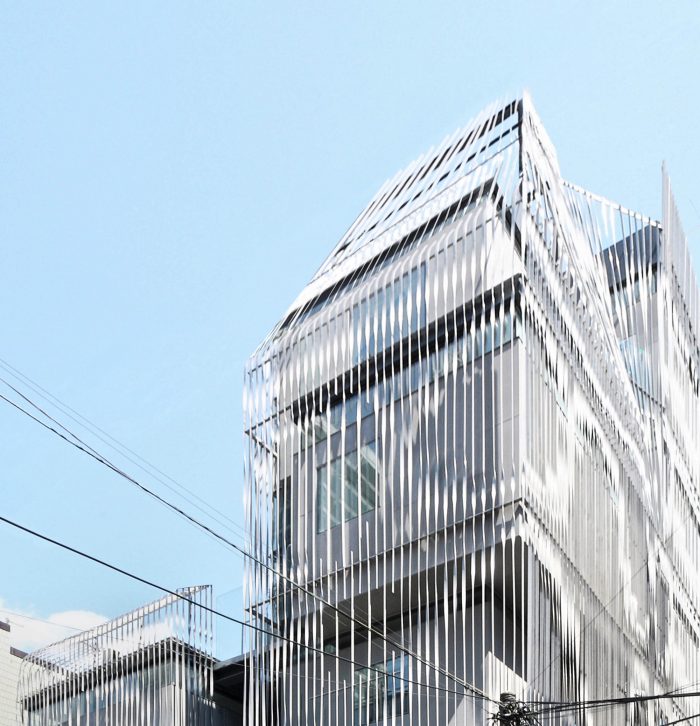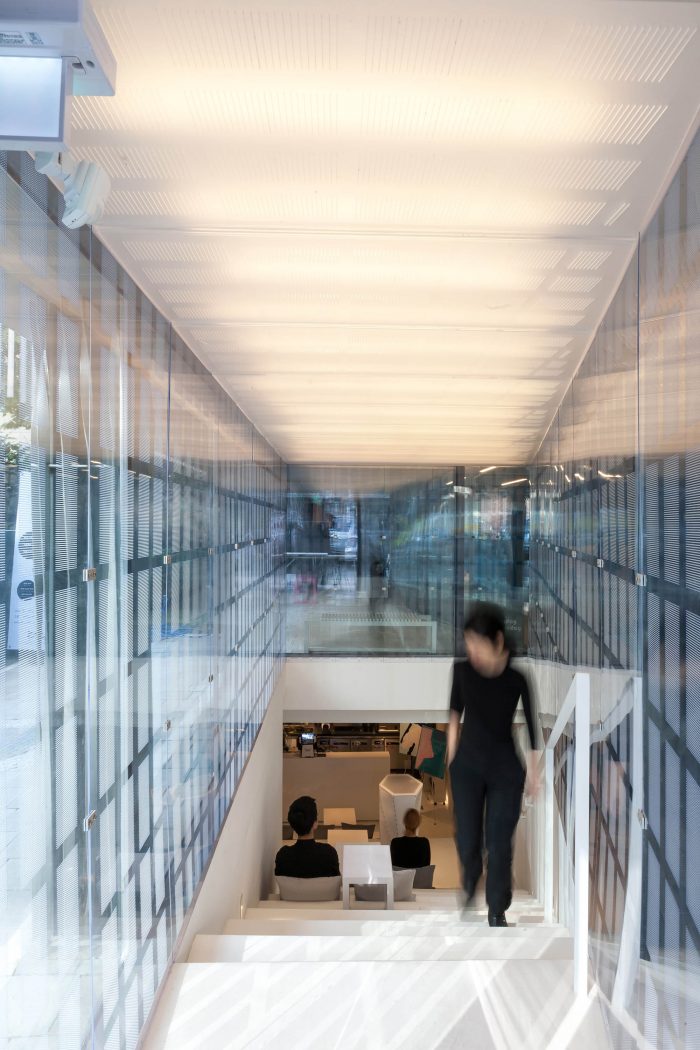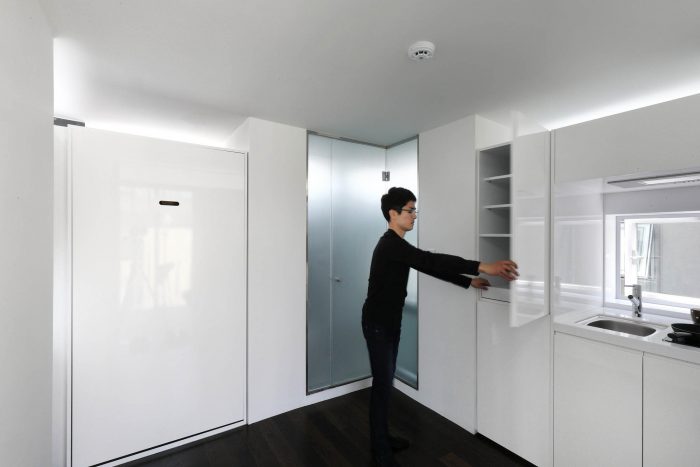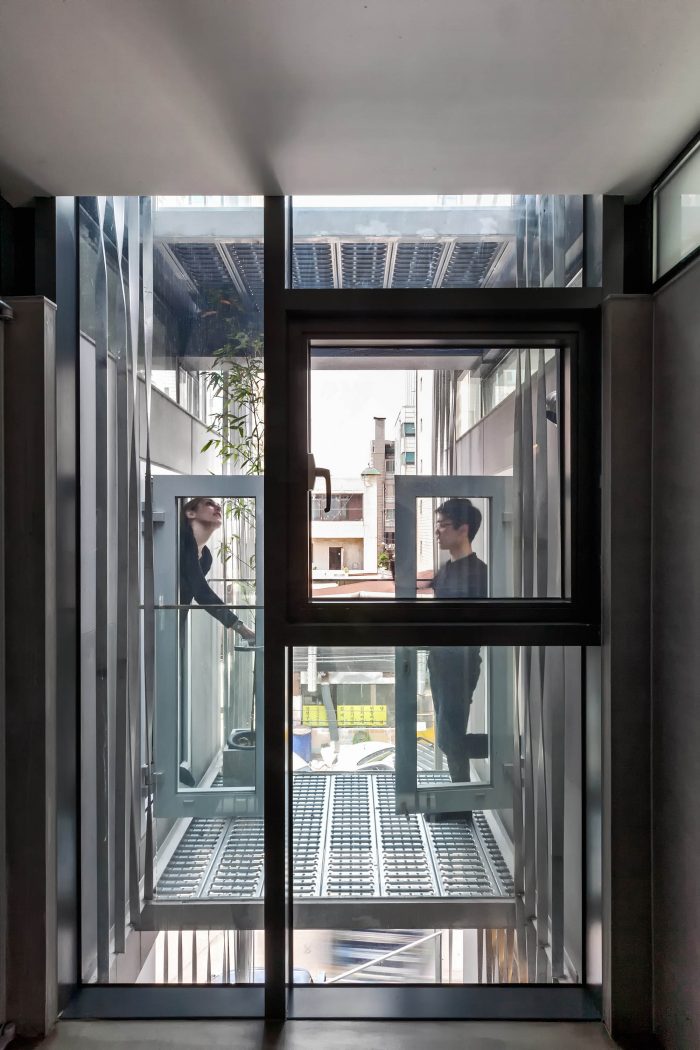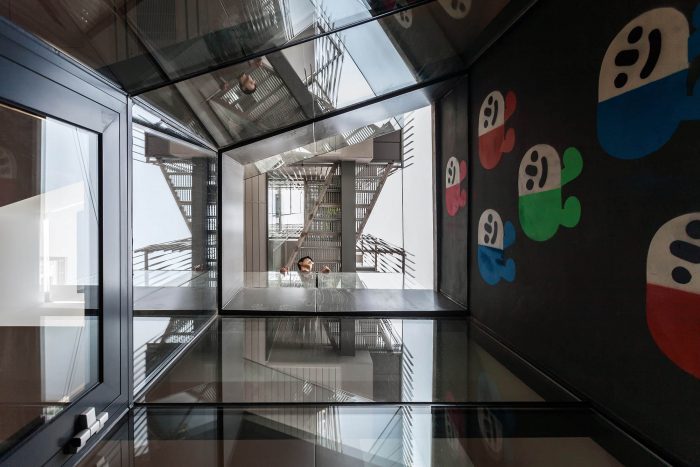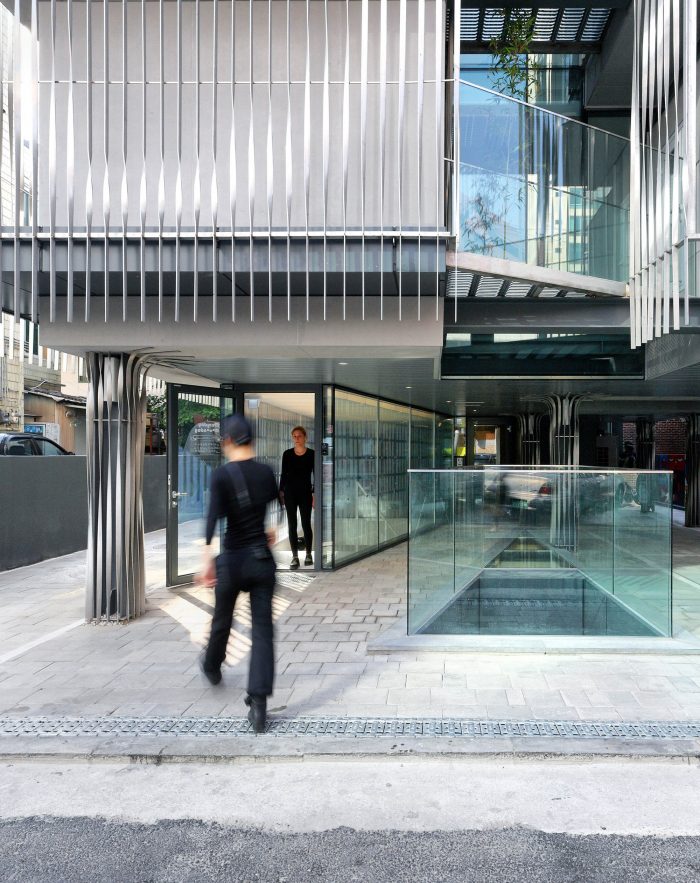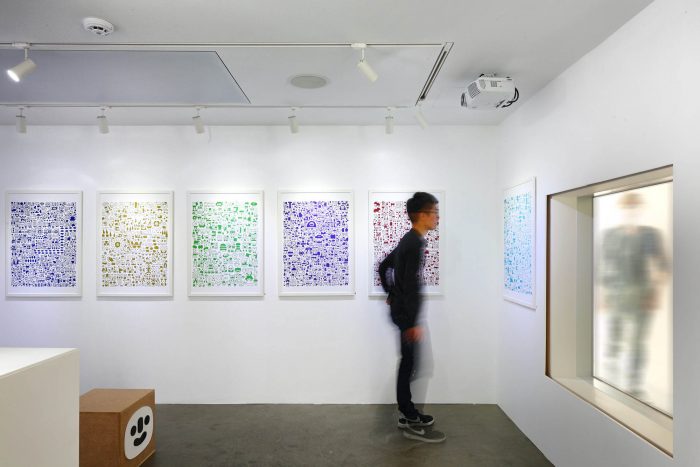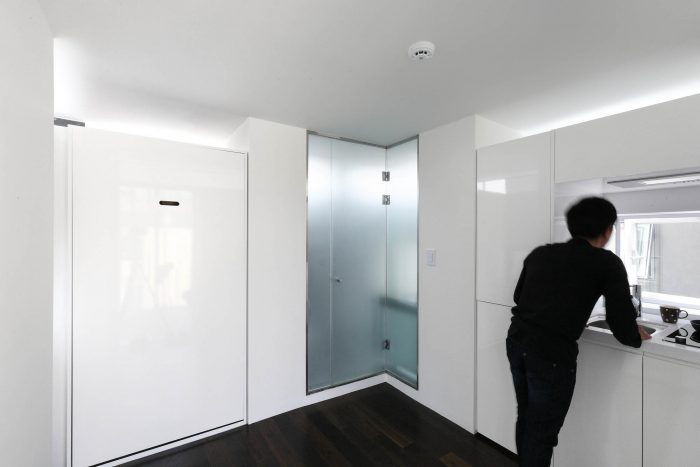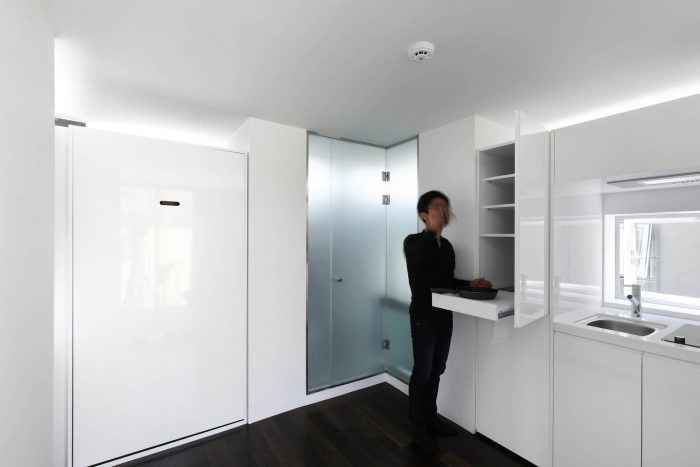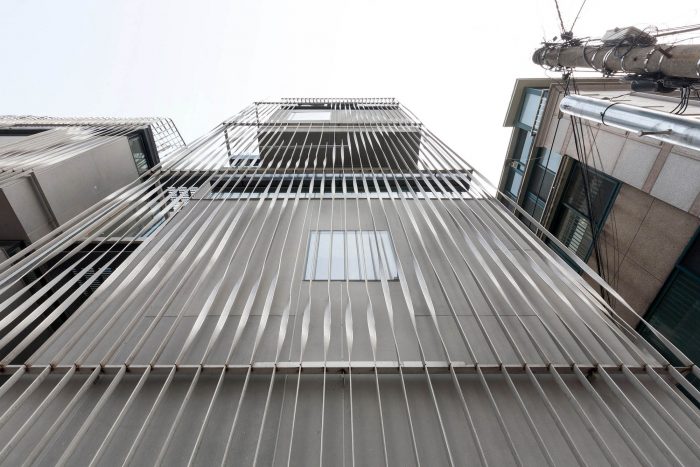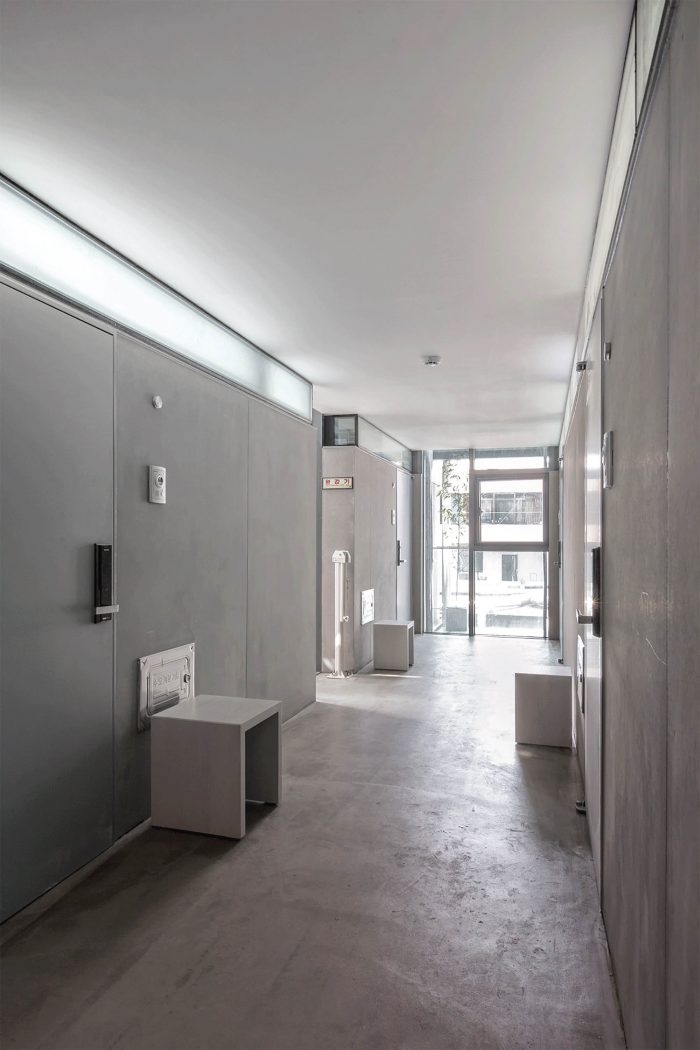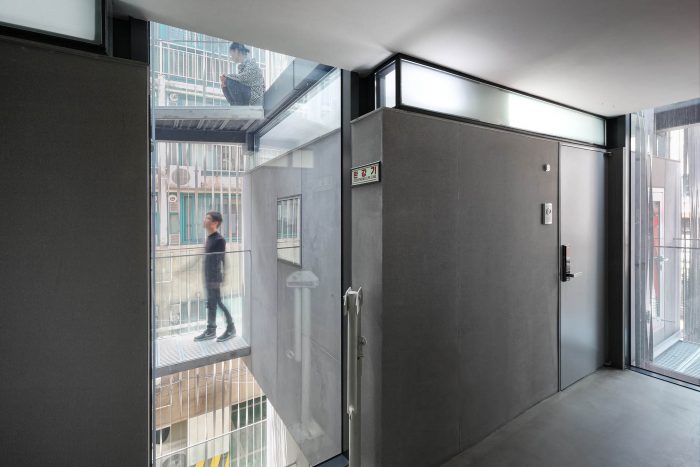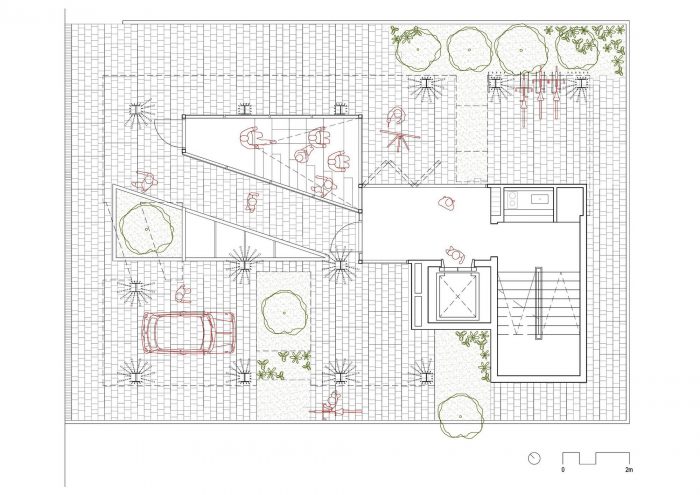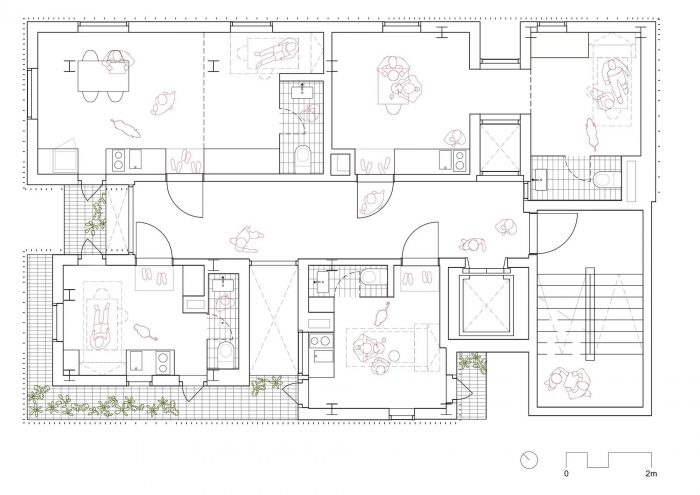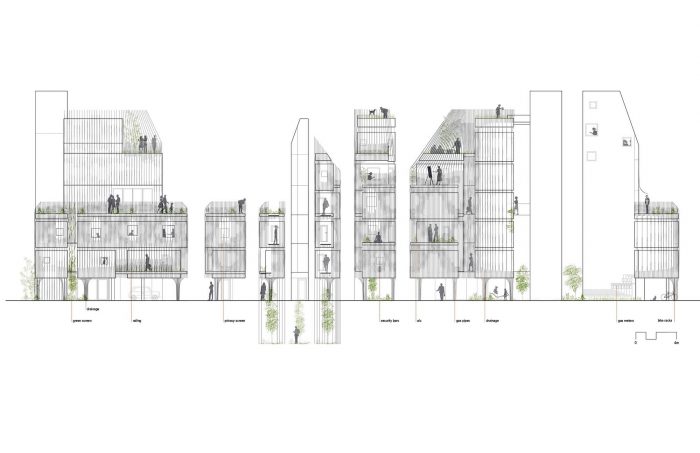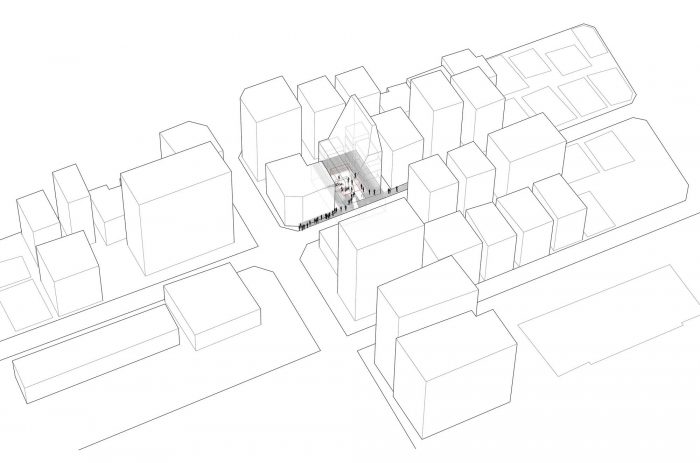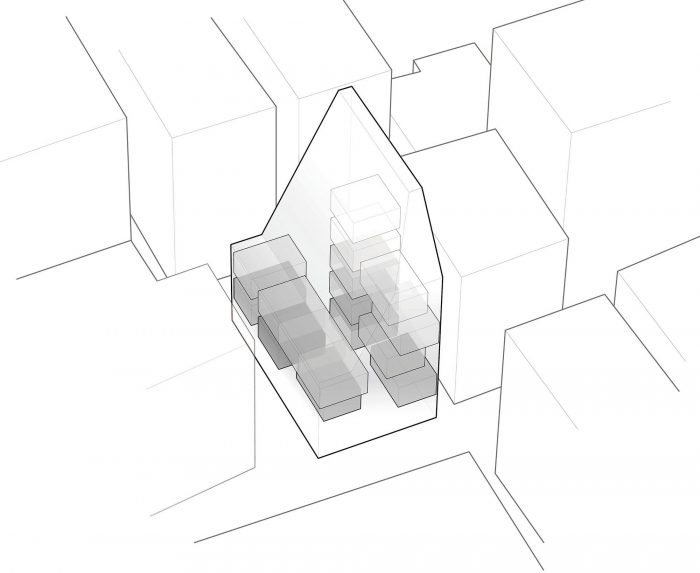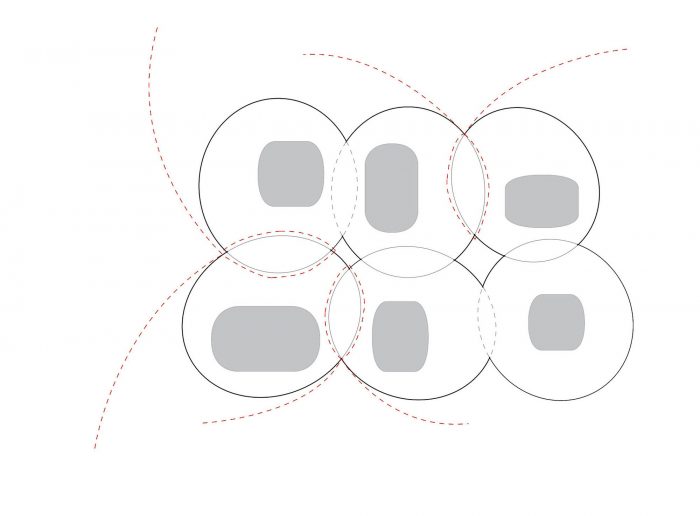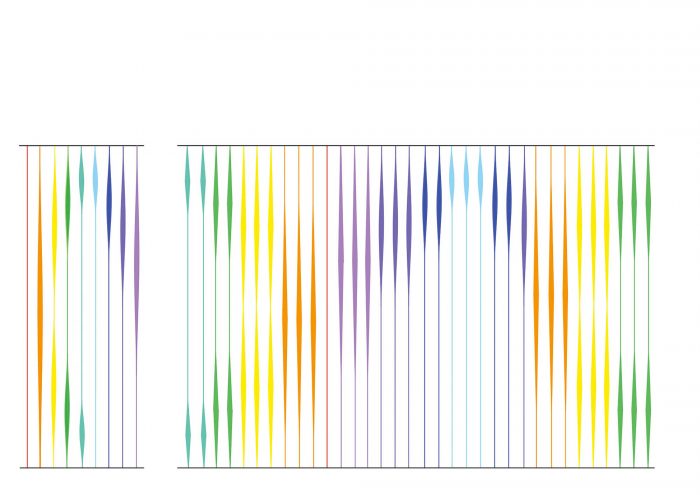城市密度和住房成本问题是全球性的。然而,随着单位类型越来越小,微型住房有可能成为一种临时性的住房类型,没有什么社会价值。通过挖掘最大容积率和最大分区围墙之间的差异,松柏微型住宅提供了一种新的类型学,将单元的限制扩大到包括半公共流通、阳台和视觉延伸。
The problem of urban density and housing costs is global. As unit types get smaller however, micro‐ housing has the danger of becoming a provisional housing type with little social value. By mining the discrepancy between maximum floor area ratios and maximum zoning envelopes, Songpa Micro‐ Housing provides a new typology that extends the limits of the unit to also include semi‐public circulation, balconies, and visual extensions.
就像木薯珍珠周围的模糊胶质一样,这个 “木薯空间 “成为公共/私人、内部/外部之间的软性交叉点,在邻里之间创造了社会结构。这样一来,这个项目的野心是证明 “空间 “和 “大小 “其实是两个独立的概念。
Like the ambiguous gel around a tapioca pearl, this ‘Tapioca Space’ becomes a soft intersection between public/private and interior/exterior, creating social fabrics between neighbors. In this way, the ambition of the project is to prove that ‘space’ and ‘size’ are actually separate concepts.
在动态灵活的混合用途住宅方面,14个 “单元楼 “允许居民申请一个单元,或者在一对夫妇或朋友需要更多空间的情况下,将单元楼重新组合成更大的配置。
In terms of dynamically flexible mixed‐use housing, fourteen ‘unit blocks’ allow residents to either claim a single unit, or in the case where a couple or friends require more space, recombine the blocks for larger configurations.
此外,单元还可以用于不同的项目,如画廊或工作空间。这种灵活性使得住户可以在建筑内居住更长时间,从而更可持续地生活,因为他们不必随着情况的变化而迁出。最后,位于底层和地下室的微型礼堂/咖啡馆在空间上与各单元相连,成为共享的客厅。
Also, units can be used for differing programs such as galleries or work spaces. This flexibility allows occupants to live in the building longer and thus more sustainably as they will not have to move out with changing situations. Finally, the micro‐auditorium / cafe on the ground floor and basement are spatially linked to the units as a shared living room.
虽然分区规定要求建筑被抬起来用于停车,但由此产生的开放的地面平面可以不断地重新规划,用于不同的活动,如表演、艺术开放或聚会。人流从街道上通过微型礼堂的台阶向下拉,将城市、建筑和居民与下面的展览空间连接起来。
While the zoning regulations require the building be lifted for parking, the resulting open ground plane can be constantly reprogrammed for differing events such as performances, art openings, or gatherings. Pedestrian traffic is pulled from the street down through the micro‐auditorium steps, connecting city, building, and residents to the exhibition spaces below.
建筑师:SsD
记录建筑师:Dyne Architects
结构工程师:Mirae Structural Design Group
施工经理:Kiro Construction
负责建筑师:Jinhee Park AIA, John Hong, SsD
城市:首尔
国家:韩国
Architects: SsD
Architect Of Record:Dyne Architects
Structural Engineer:Mirae Structural Design Group
Construction Manager:Kiro Construction
Architects In Charge:Jinhee Park AIA, John Hong, SsD
City:Seoul
Country:South Korea

